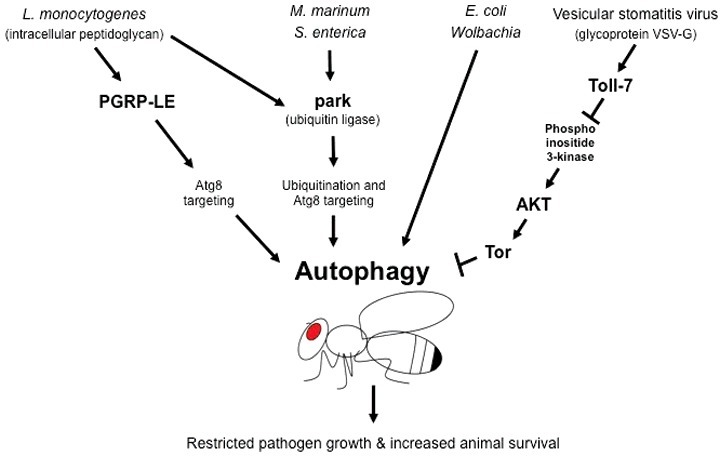Figure 2.

Pathogen responses linked to autophagy in Drosophila melanogaster. Autophagy is linked to defense against several intracellular pathogens in the fruit fly D. melanogaster. Intracellular peptidoglycan of the bacterium Listeria monocytogenes binds to the peptidoglycan recognition receptor PGRP-LE in hemocytes, which induces autophagy and clears the pathogen via Atg8 targeting. Infection by Mycobacterium marinum, Salmonella enterica, Escherichia coli and Wolbachia, a common insect pathogen, is also cleared by autophagy. In particular, clearance of M. marinum and S. enterica involves the ubiquitin ligase PARK2/park and Atg8 targeting. Clearance of viral infections has also been linked to autophagy. Specifically, binding of the vesicular stomatitis virus (VSV)-G glycoprotein to the pattern recognition receptor Toll-7 inhibits activation of Tor through the phosphoinositide 3-kinase-Akt pathway. Because Tor negatively regulates autophagy, its inhibition by VSV-G signaling results in induction of autophagy, which restricts viral replication and promotes organismal survival. See text for details and Table 1 for autophagy genes linked to immunity in D. melanogaster.
